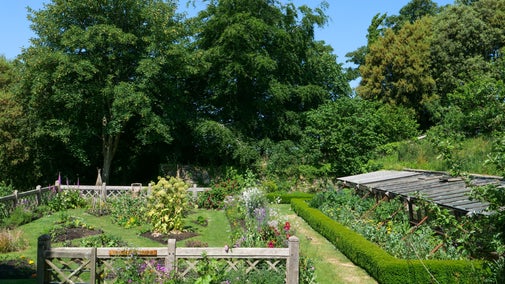
Trerice's collections
Explore the objects and works of art we care for at Trerice on the National Trust Collections website.

The owners of Trerice became well connected through marriage and held strong positions at the Royal Court. Find out about the different families who inherited, lived at, neglected and restored Trerice.
By the 16th century the Arundell family had become well-established and was connected by marriage to nearly all the other landed families in Cornwall. These landlords live off a rental income from leasing out their land or estate which can include tenanted cottages and farms.
The status of the family increased through various members gaining good positions at the Royal Court. These family members would travel to London to try to impress Queen Elizabeth I who could offer jobs in government. The Royal Court was the centre of Elizabethan England and to be involved there would ensure power and a large income too.
The Arundell family inherited Trerice through marriage around 700 years ago. By 1572 John Arundell V had begun building the house you can see today. Just ten years earlier his income had been boosted by marrying well.
Son of the builder of Trerice, Sir John Arundell VI earned the title John for the King due to his role in the Civil War. He successfully defended Pendennis Castle in Falmouth for King Charles I.
After the restoration of Charles II, Richard Arundell became Baron Arundell in recognition of the support he and his father had given to King Charles I.

It was the marriage of John, 2nd Baron Arundell to Margaret Acland in 1675 that eventually led to the great Devonian family inheriting Trerice. The Acland family were based at Killerton near Exeter in Devon, they also owned the large estate of Holnicote in North Somerset.
Sir Thomas Dyke Acland never lived at Trerice but often stayed during his political visits into Cornwall. He also used the Great Hall for lavish entertaining of guests. The huge banqueting table in the hall gives an idea of how many people may have been invited for dinner.
Initially arriving at Trerice as tenants of the last private owner, the Elton family took on the tenancy from the National Trust when the charity bought it in 1953. John Elton paid for the repair of the roof and remaining parts of Trerice and went on to rebuild the fallen North Wing. His aim was to create a comfortable family home.

Explore the objects and works of art we care for at Trerice on the National Trust Collections website.
Explore inside the house to see decorative plasterwork and collection items including a large table, Cornish paintings and a 300-year-old clock.

Explore an Elizabethan-inspired knot garden and an orchard full of Cornish apple varieties. It’s a great place to spot wildlife.

Learn about people from the past, discover remarkable works of art and brush up on your knowledge of architecture and gardens.

Explore the objects and works of art we care for at Trerice on the National Trust Collections website.
